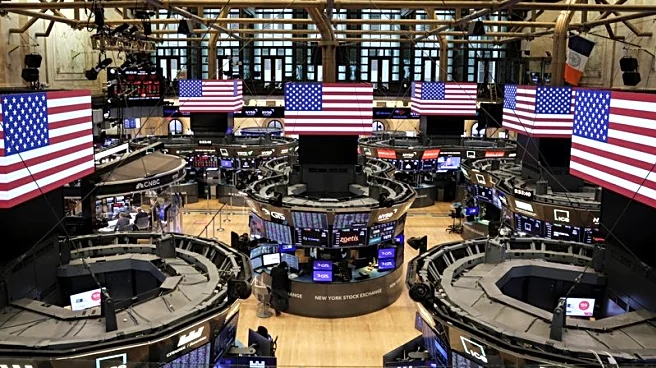What's Happening?
Gold prices have eased following stronger-than-expected U.S. economic data, which has bolstered the dollar and cast doubt on the Federal Reserve's rate cut outlook. Spot gold rose 0.8% to $3,777.79 per ounce, while U.S. gold futures for December delivery increased by 1% to $3,807.90. The U.S. Personal Consumption Expenditures (PCE) price index rose 2.7% year-on-year in August, aligning with expectations and reinforcing bets on potential interest rate cuts by the Federal Reserve later this year. Investors are closely watching remarks from Richmond Fed President Thomas Barkin and Fed Vice Chair Michelle Bowman for further insights into the Fed's stance.
Why It's Important?
The fluctuation in gold prices reflects broader economic trends and investor sentiment regarding interest rates and inflation. Gold, traditionally seen as a safe haven, benefits from lower interest rates, making it an attractive investment during economic uncertainty. The strong U.S. economic data and inflation expectations influence market dynamics, affecting investment strategies and economic forecasts. The potential for interest rate cuts by the Federal Reserve could have significant implications for financial markets and economic growth.
What's Next?
Investors will continue to monitor U.S. economic indicators and Federal Reserve communications for clues on future interest rate decisions. The upcoming inflation report and remarks from Fed officials will be critical in shaping market expectations and investment strategies. The potential for further interest rate cuts may influence gold prices and broader market trends.
Beyond the Headlines
The current economic environment highlights the complex interplay between inflation, interest rates, and investment strategies. The reliance on gold as a safe haven underscores the importance of diversification in investment portfolios and the need for strategic planning to navigate economic uncertainties.











